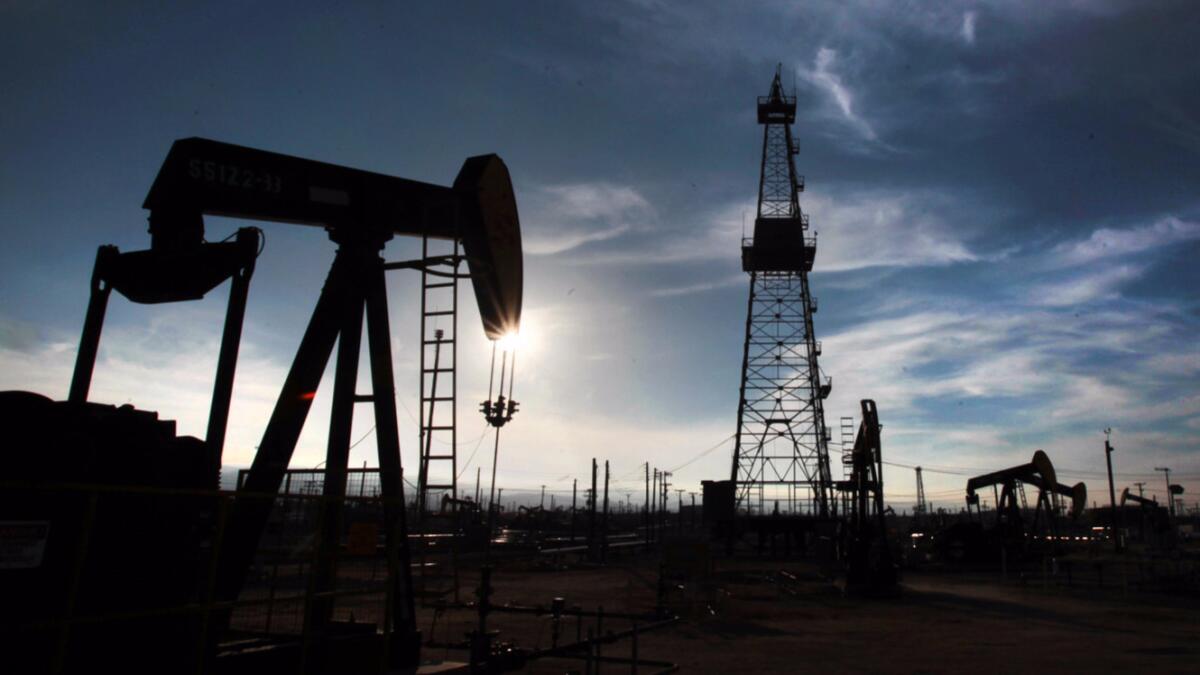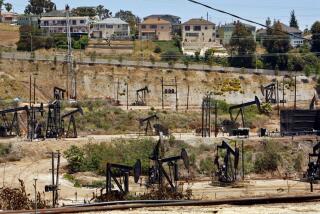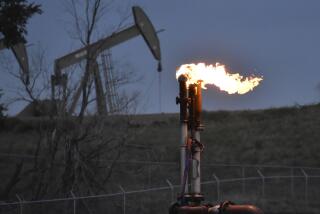U.S. now has bigger recoverable oil reserves than Saudi Arabia or Russia

- Share via
The United States has overtaken industry giants Saudi Arabia and Russia in recoverable oil reserves, an international study released Monday says.
The U.S. is sitting on 264 billion barrels, 8 billion barrels more than Russia and 52 billion more than Saudi Arabia, the dominant member of the Organization of Petroleum Exporting Countries (OPEC), according to the report by Rystad Energy, a respected oil and gas consulting firm based in Oslo.
Three years ago, the U.S. was behind Russia, Saudi Arabia and Canada in Rystad’s estimates of recoverable oil — barrels that are technologically and economically feasible to extract.
“It is an encouraging study,” said Saeed Irani, president of Irani Engineering, a Sacramento company that is one of the state’s leaders in oil field operations. “It shows that even though our economy is so vast and diverse, oil is still going to play a big part in it.”
The big jump for the U.S. largely stems from technological advancements such as hydraulic fracturing and horizontal drilling that squeeze oil and gas from shale formations.
Starting in the mid-2000s, shale from places such as the Bakken formation in North Dakota and the Permian Basin in Texas helped reverse a long-term trend of flattening oil production in the U.S.
Poring over data from more than 60,000 oil fields across the globe, the Rystad Energy study reported overall global reserves of 2.1 trillion barrels. It said more than half the remaining reserves in the U.S. are in unconventional shale oil.
By itself, Texas holds more than 60 billion barrels of shale oil, rivaling all of Mexico.
Oil experts say the figures should be viewed in context of the price at which reserves are worth exploiting.
“It’s not like a hard number,” said James D. Hamilton, an economics professor at UC San Diego. “It’s a function of economics.”
Although oil prices have recovered since hitting a low of $27 a barrel in February, the price for West Texas Intermediate — the benchmark price for domestic crude — fell nearly 5% amid global market jitters Tuesday to $46.60 a barrel.
That’s a far cry from the $100-a-barrel mark oil enjoyed in June 2014.
“I don’t think much of [the reserves are] going to be produced if the price were to stay below $50,” Hamilton said. “But if it goes back to $100, there’s quite a bit of oil that can be produced for a number of years from the United States.”
Although California has a reputation as the leader among U.S. states for renewable energy production, it has also long been among the nation’s biggest oil producers.
According to the U.S Energy Information Administration, California’s crude oil production is the third-largest in the country, trailing only Texas and North Dakota and ahead of Alaska.
But the shale revolution has largely passed California by. Irani cited regulations on hydraulic fracturing that are stricter than in most states and challenges to advanced drilling techniques in the Monterey Shale formation in the Central Valley.
“Even though [the Monterey formation] produces oil, it [also] produces a lot of water,” Irani said. “And especially at these prices, nobody is attempting to do anything creative in Monterey now and with the regulations in place it’s hard to see that they’re going to do anything about it in the near future.”
rob.nikolewski@sduniontribune.com
ALSO
Beverly Hills billionaire to take over the maker of Twinkies
Autopilot technology puts Tesla at risk for liability in crashes
More to Read
Inside the business of entertainment
The Wide Shot brings you news, analysis and insights on everything from streaming wars to production — and what it all means for the future.
You may occasionally receive promotional content from the Los Angeles Times.










